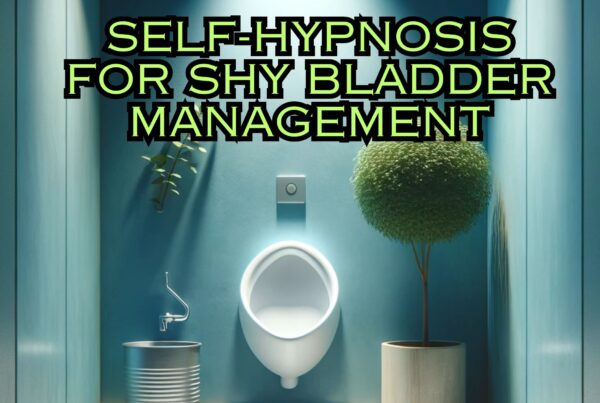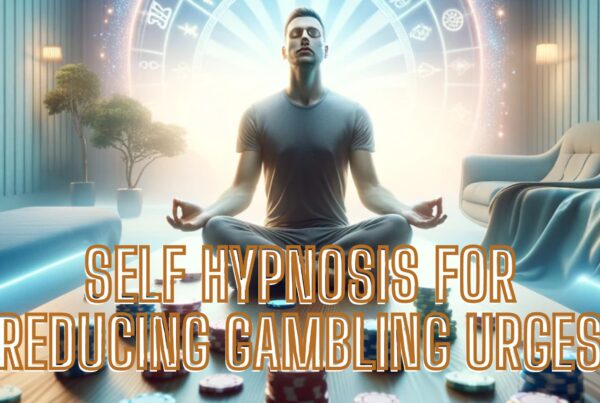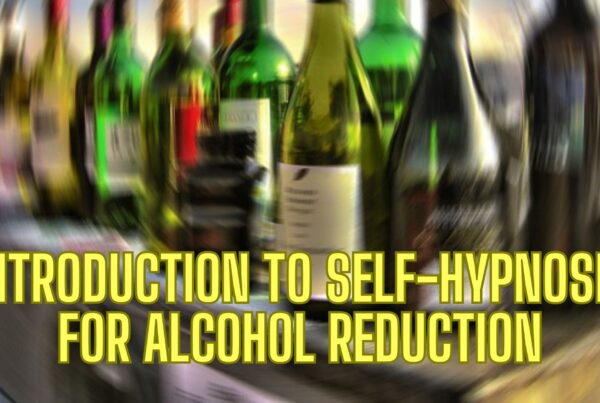Unlocking the Power of the Mind: A Guide to Self-Hypnosis at Home
The Essence of Self-Hypnosis
In the journey of life, the mind can be likened to an ocean, vast and mysterious, with depths unexplored and potentials untapped. Self-hypnosis, a technique often shrouded in mystery, is a powerful tool for navigating these waters, allowing individuals to dive deep into their subconscious, unlocking the doors to self-improvement and personal growth. It is a journey that begins within the comfort of one’s own home, a sanctuary where transformation can take root.
Understanding the Process
Self-hypnosis is often misunderstood, perceived as a loss of control or an external influence. However, it is essential to recognize that it is a state of heightened awareness and focus, where the individual remains in control. It is a process of self-induced relaxation, where the conscious mind takes a step back, allowing the subconscious to come to the forefront. This shift in focus is akin to tuning a radio to a different frequency, where the noise of the outside world fades, and the inner voice becomes clear and resonant.
Preparing for the Journey
Before embarking on this journey, the environment must be conducive to relaxation and introspection. A quiet, comfortable space, free from distractions, is paramount. It is in this tranquil setting that the mind can find the calmness needed to delve inward. The preparation phase also involves setting a clear intention or goal for the session. Whether it is stress reduction, overcoming a phobia, or enhancing self-esteem, this intention acts as a compass, guiding the subconscious towards the desired destination.
The Induction Phase
The induction phase is the bridge between the conscious and subconscious realms. It typically involves a series of relaxation techniques, such as deep breathing, progressive muscle relaxation, or visualization. These techniques are like the gentle waves that slowly erode the shores of tension, leading to a state of deep relaxation and openness. The individual’s focus narrows, and the external world begins to fade, making way for the inner world to emerge.
Deepening the Hypnotic State
Once the initial relaxation is achieved, the process of deepening the hypnotic state begins. This phase can be likened to diving deeper into the ocean, where the waters become still and serene. Techniques such as counting down, visualizing descending stairs, or imagining a peaceful place are employed. These methods help in further relaxing the mind and body, allowing the individual to sink deeper into the hypnotic state, where the subconscious becomes more accessible and receptive.
Communicating with the Subconscious
In this receptive state, the individual can begin to communicate with their subconscious. This communication is the heart of self-hypnosis. It involves the use of positive affirmations, suggestions, or visualizations that align with the individual’s goals. These messages are like seeds planted in the fertile soil of the subconscious, where they can germinate and grow, leading to changes in thoughts, feelings, and behaviors.
Returning to Conscious Awareness
After spending the desired time in the hypnotic state, it is crucial to return to full conscious awareness gently. This phase can be compared to ascending from the depths of the ocean, slowly and steadily. Counting upwards or visualizing climbing stairs are common techniques used to emerge from hypnosis. It is important to take the time to become fully alert and oriented, ensuring a smooth transition back to the waking state.
Integrating the Experience
The journey of self-hypnosis does not end with the return to consciousness. The integration of the experience into daily life is a critical component. It is in the days and weeks that follow that the seeds of change begin to sprout. The individual may notice subtle shifts in their thoughts, feelings, and behaviors, reflecting the positive suggestions and affirmations internalized during the session.
Step-by-Step Guided Example of a Self-Hypnosis Session
Embarking on a self-hypnosis journey can be likened to preparing for a serene and introspective voyage. Begin by finding a quiet, comfortable space where you won’t be disturbed. Sit or lie down, and close your eyes. Start with deep, slow breaths, inhaling tranquility and exhaling any tension. Visualize each muscle in your body relaxing, starting from your toes and gently moving up to the crown of your head.
Now, imagine yourself in a place of absolute peace. It could be a beach, a garden, or any space that signifies serenity to you. In this place, find a path that leads you deeper into your subconscious. With each step, feel yourself becoming more relaxed and open. When you feel fully immersed in this state, begin to focus on your intention or goal. Repeat positive affirmations related to this goal, feeling each word resonate deeply within you.
To conclude the session, slowly count yourself back to your conscious state, from five to one. With each number, feel yourself becoming more aware of your surroundings. Open your eyes when you’re ready, feeling refreshed and carrying with you the peace and insights from your journey.
Regular Practice and Patience
Like any skill, self-hypnosis requires regular practice and patience. The mind, a complex and dynamic entity, does not change overnight. However, with consistent practice, the benefits of self-hypnosis become more pronounced. Over time, the individual learns to navigate their subconscious with greater ease, making deeper and more meaningful changes.
Common Challenges and Solutions in Self-Hypnosis
One common challenge is the wandering mind. It’s natural for thoughts to drift during self-hypnosis. When this happens, gently guide your focus back to your breathing or visualization without judgment. Another challenge is skepticism or doubt about the process. To overcome this, maintain an open, curious mindset. Remember, self-hypnosis is a skill that improves with practice.
Some individuals may find it hard to relax deeply. If so, experimenting with different relaxation techniques or practicing mindfulness during the day can enhance your ability to enter a hypnotic state. Lastly, if you find it difficult to focus on your goals, try simplifying your affirmations or visualizations, making them more specific and resonant with your personal aspirations.
Frequently Asked Questions About Self-Hypnosis
Q: Can self-hypnosis be dangerous?
A: Self-hypnosis is generally safe when practiced for self-improvement or relaxation. However, it’s not a substitute for professional medical or psychological treatment.
Q: How often should I practice self-hypnosis?
A: Regular practice yields better results. Starting with once a day, preferably at the same time, can help establish a routine.
Q: Will I lose control during self-hypnosis?
A: No, you remain in control throughout the process. Self-hypnosis is a state of focused attention and relaxation, not a loss of control.
Resources for Further Learning in Self-Hypnosis
For those eager to deepen their understanding and practice of self-hypnosis, several resources are available. Books like “HYPNOTHERAPY: METHODS, TECHNIQUES AND PHILOSOPHIES OF FREDDY JACQUIN” by Freddy Jacquin and “The SEVEN Most EFFECTIVE Methods of SELF-HYPNOSIS: How to Create Rapid Change in your Health, Wealth, and Habits” by Richard Nongard provide valuable insights. Don’t forget that we offer a range of pre-recorded hypnosis audio here. Remember, the journey of self-hypnosis is one of personal exploration and growth, and these resources can be valuable companions along the way.
Self-Hypnosis at Home
Self-hypnosis is a journey of self-discovery and transformation that begins in the comfort of one’s own home. It is a process of tuning into the subconscious, setting intentions, and gently guiding the mind towards positive change. With practice, patience, and a willingness to explore the depths of the mind, self-hypnosis can be a powerful tool for personal growth and well-being.
Release Hypnosis Melbourne Hypnotherapy
Since 2016, Lawrence Akers has been working under the name Release Hypnosis offering Hypnotherapy and ACT based work to the people of Melbourne or an online service. Based on St Kilda Rd, Release Hypnosis is an easy and convenient location to get to and accessible by the ANZAC station train and tram stop. Release Hypnosis can help with a wide range of presenting issues, and I offer a free 30 minute no obligation discovery call for those who are unsure if hypnotherapy is the right way forward for them.
Book Your FREE 30 Minute Consultation With Release Hypnosis NOW!
You may also like to read:
Discovering Purpose and Values: A Path to Mental Well-being
Can’t Visualise in Hypnosis? Here’s What You Can Do Instead.
Dealing with Financial Stress and Crisis: Finding Peace Amid Turbulence
What Is The Success Rate of Hypnosis?
Release Hypnosis Melbourne Hypnotherapy is accessible for people in: Abbotsford, Armadale, Albert Park, Balwyn, Bentleigh, Black Rock, Box Hill, Brighton, Brunswick, Bulleen, Bundoora, Camberwell, Canterbury, Carnegie, Caulfield, Chadstone, Cheltenham, Clayton, Coburg, Collingwood, Deer Park, Doncaster, Elsternwick, Eltham, Elwood, Epping, Essendon, Fairfield, Fitzroy, Footscray, Glen Iris, Glen Waverley, Glenhuntly, Greensborough, Hampton, Hawthorn, Heidelberg, Highet, Ivanhoe, Kew, Kooyong, Lalor, Laverton, Lower, Plenty, Macleod, Malvern, Middle Park, Moonee Ponds, Melbourne, Moorabbin, Mount Waverley, Murrumbeena, Northcote, Oakleigh, Ormond, Parkville, Pascoe Vale, Port Melbourne, Prahran, Preston, Richmond, Rosana, Sandringham, South Yarra, South Melbourne, Spotswood, St Albans, St Kilda, Surrey Hills, Templestowe, Thornbury, Toorak, Tullamarine, Williamstown, Yarraville, North Melbourne, Windsor, East Melbourne, Melbourne, Melbourne CBD, Melbourne 3004








